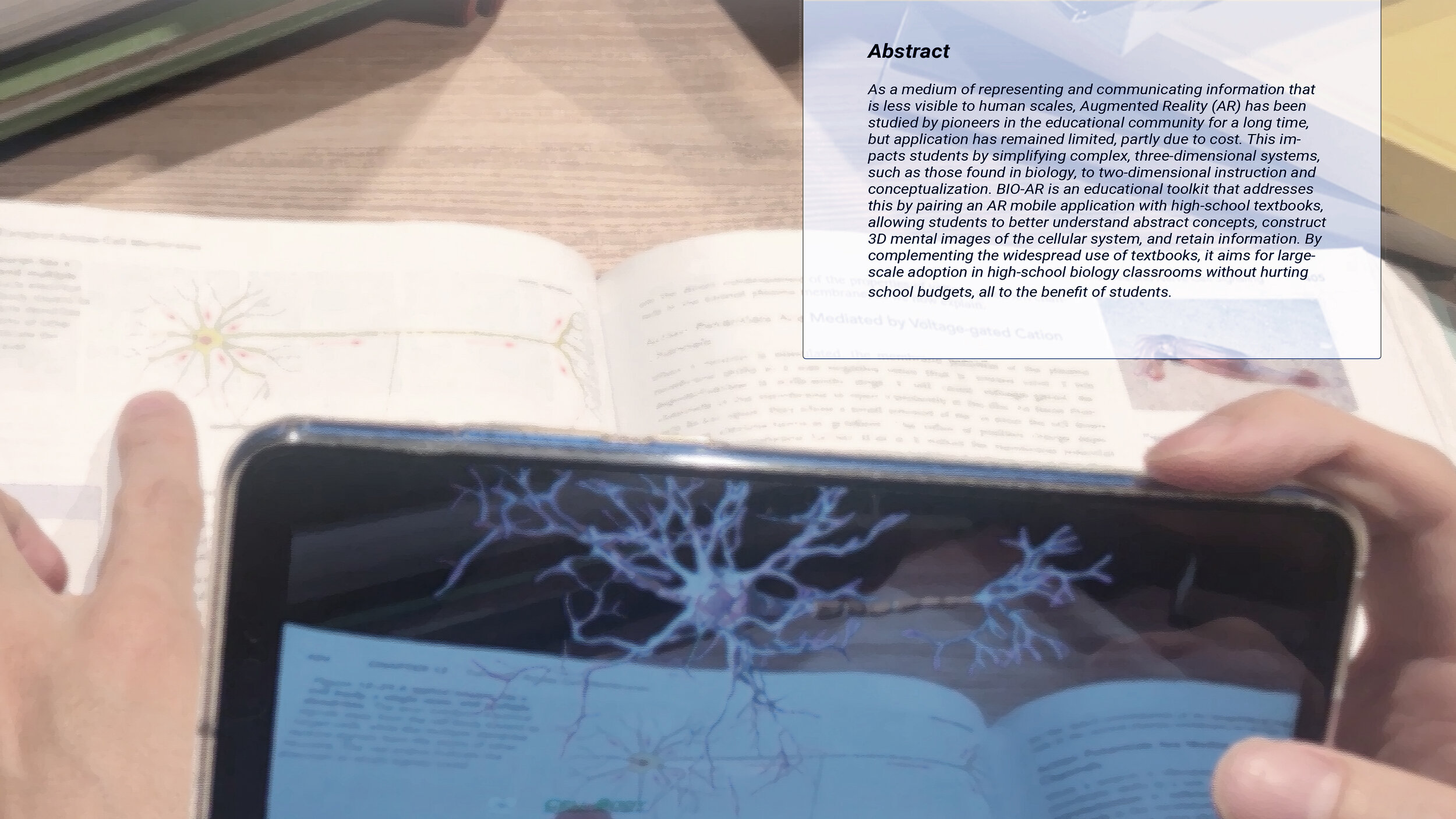
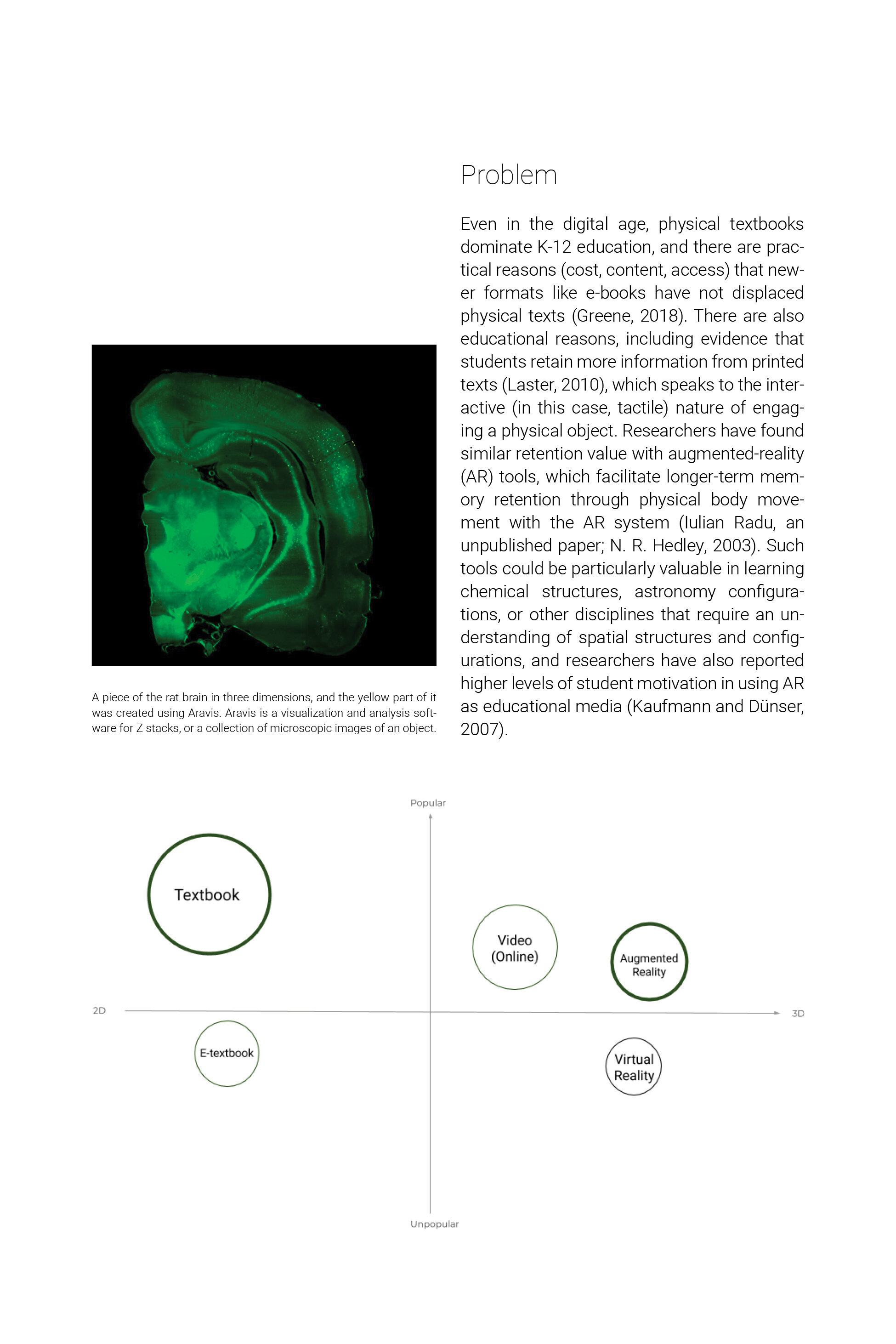



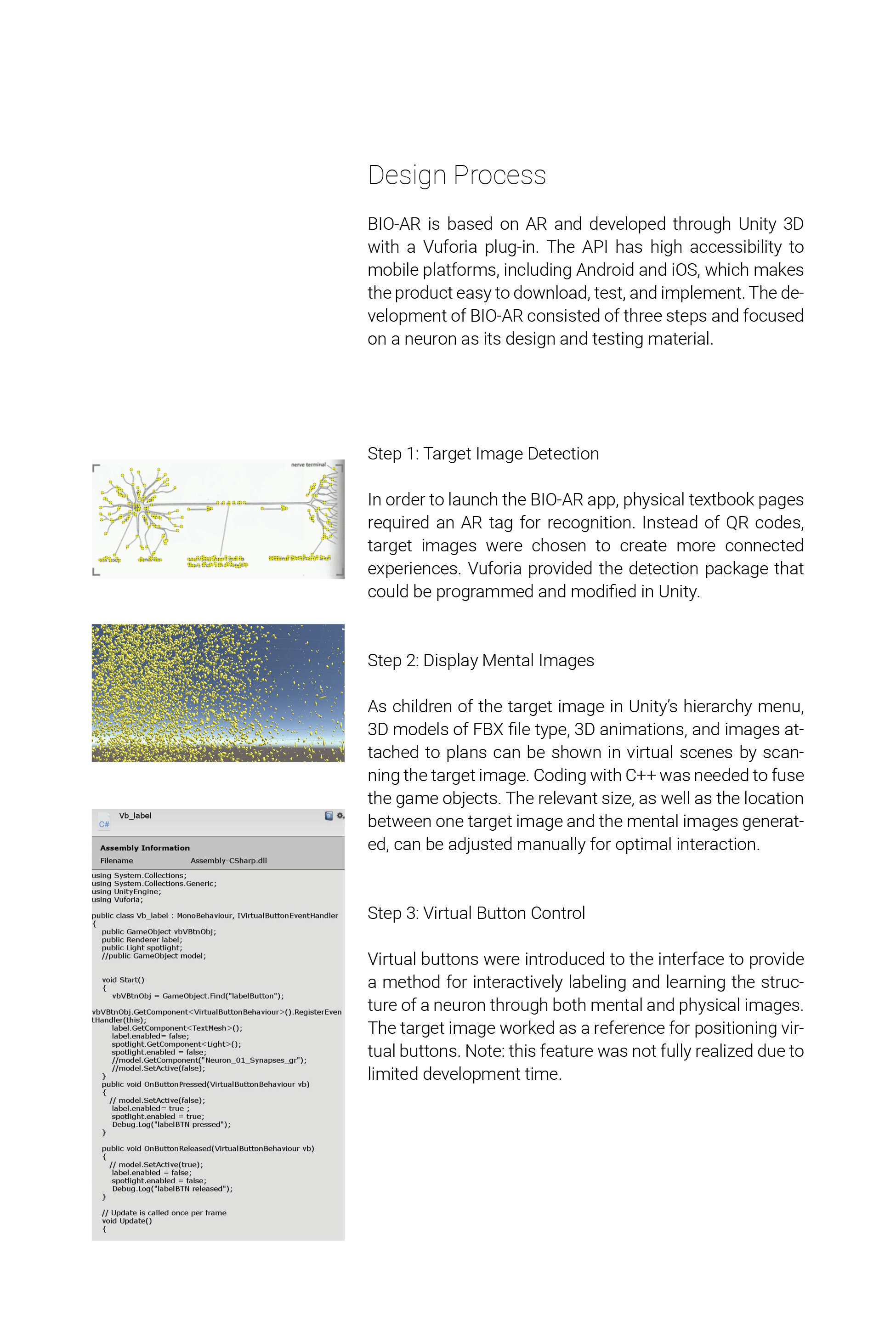
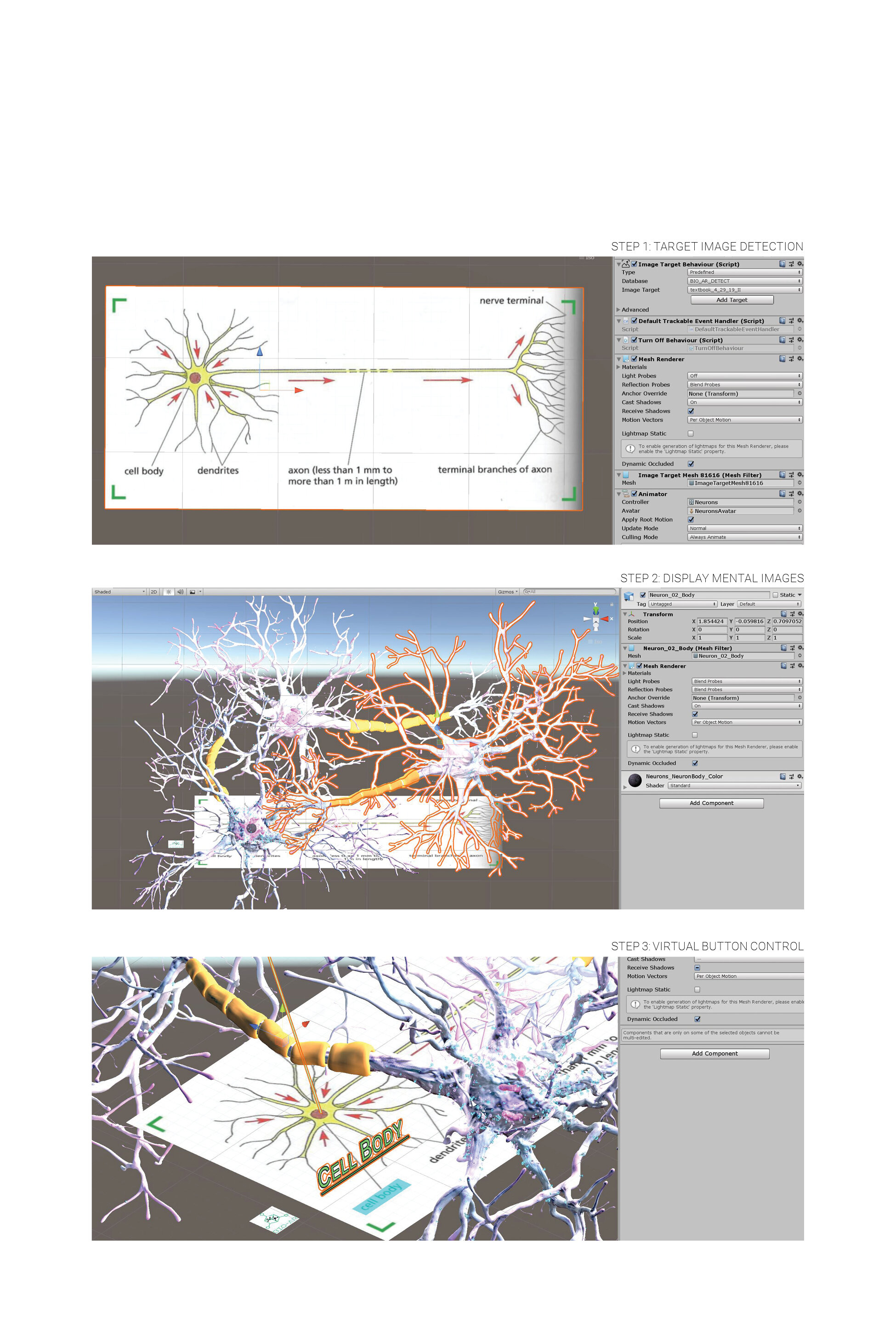
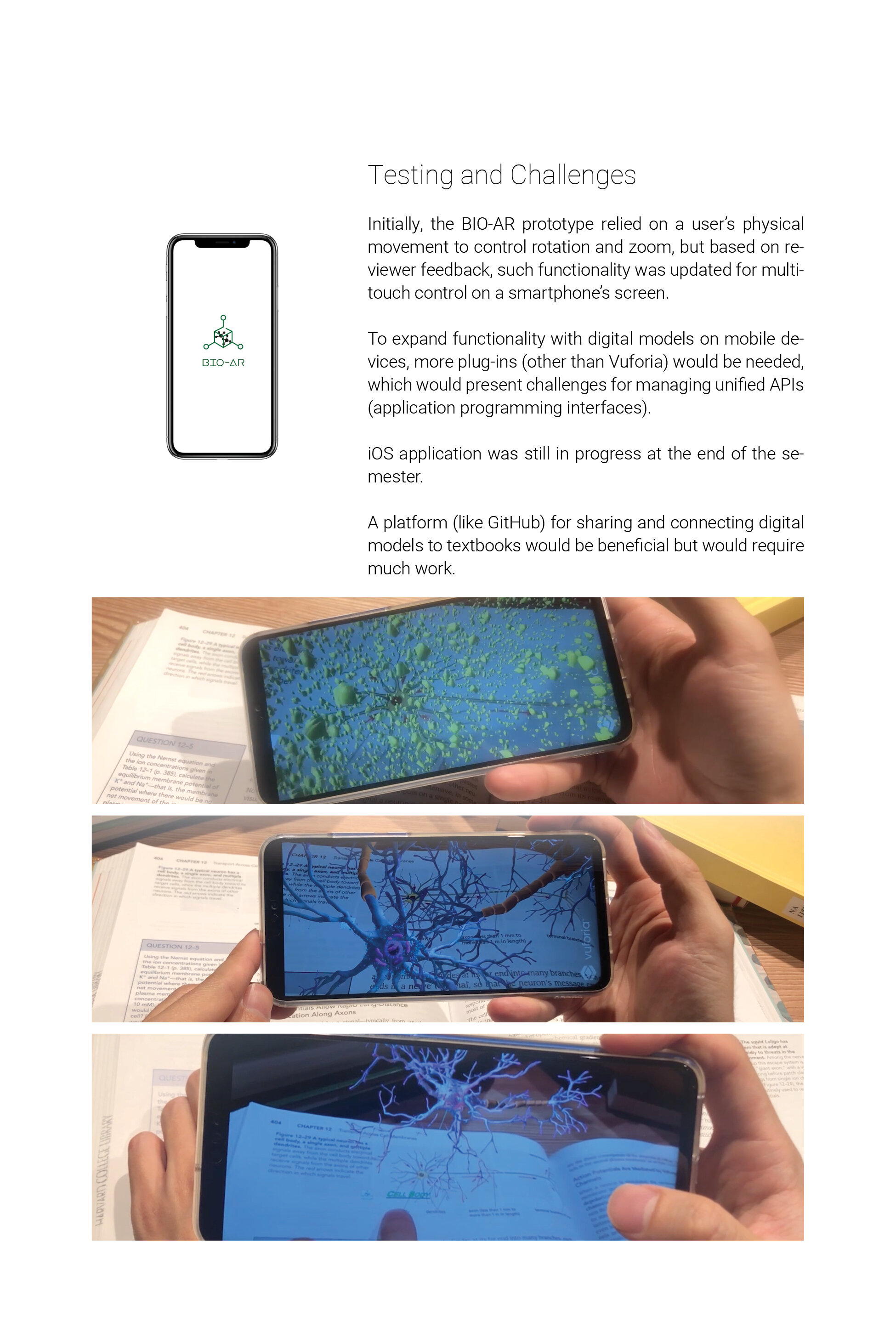
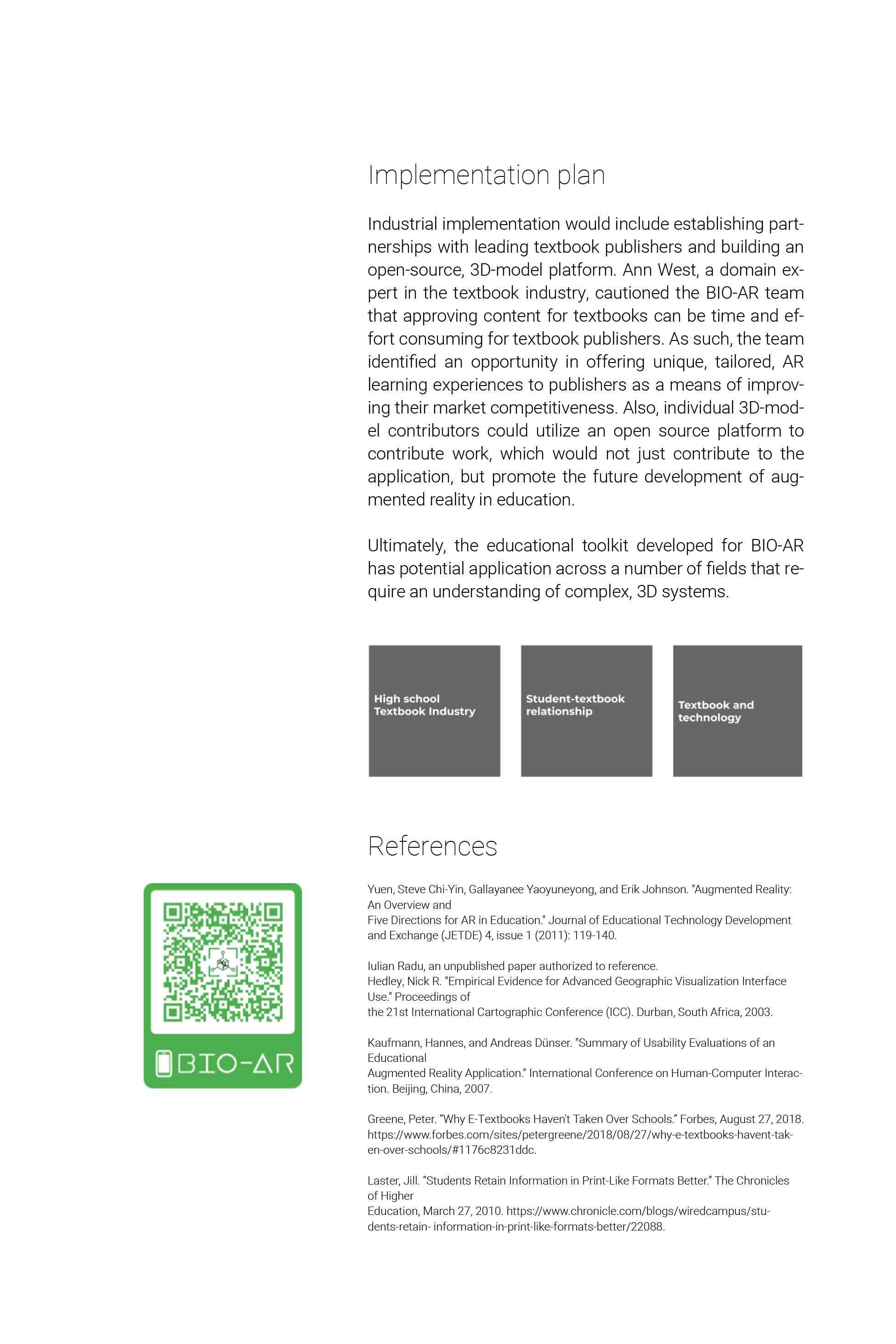
BIO-AR: Augmenting Biology Education with AR
Harvard MDE, 2019
Team member: Anahide Nahhal, Audrey Haque, Berlynn Bai
#MOOC #AR #Textbook
Tools: Unity 3D, Vuforia, Keyshot AR
Bringing Textbooks to Life
In today’s digital world, physical textbooks still dominate classrooms, and for good reason—they’re accessible, cost-effective, and proven to aid retention. But when it comes to subjects like biology, which require students to grasp complex three-dimensional structures, textbooks can fall short.
BIO-AR bridges this gap by integrating augmented reality (AR) with traditional textbooks, transforming flat, static images into interactive 3D models. With just a smartphone, students can scan textbook pages and instantly visualize biological systems in 3D, enhancing both understanding and engagement.
Developed at Harvard MDE in 2019, BIO-AR was created by a team of designers and engineers—Anahide Nahhal, Audrey Haque, and Berlynn Bai—to bring scientific concepts to life without increasing educational costs. The project was guided by expert interviews with professors from Harvard’s Graduate School of Education, Medical School, and Engineering School, ensuring that its pedagogical approach, technical feasibility, and medical accuracy aligned with real-world learning needs. Additionally, real medical lab digital data was used to construct scientifically accurate 3D models, enhancing BIO-AR’s credibility and educational value.
The Problem: Learning 3D Concepts in a 2D World
Science education heavily relies on textbooks, but traditional biology books reduce complex three-dimensional structures to simplified diagrams, forcing students to mentally reconstruct them in 3D.
Textbooks remain the most widely used learning tool, but they fail to illustrate spatial relationships effectively.
Studies show that AR improves retention by engaging learners in physical interaction and movement.
Budget constraints prevent many schools from adopting high-cost digital learning tools, leaving many students without access to interactive content.
The Solution: AR + Textbooks = Better Learning
BIO-AR combines the best of both worlds: the reliability and accessibility of textbooks with the immersive, interactive benefits of AR.
✅ Students scan a textbook image with their phone camera.
✅ A green box and BIO-AR logo indicate AR-enabled pages.
✅ The static 2D image transforms into a fully interactive 3D model on the phone screen.
✅ Users can rotate, zoom, and explore the model in 360 degrees for a deeper understanding.
✅ Virtual buttons provide interactive labels, helping students learn in a more engaging way.
Unlike other digital tools, BIO-AR works with any smartphone and requires no extra equipment, making it cost-effective and widely scalable.
How BIO-AR Works: The Design Process
BIO-AR was built using Unity 3D and Vuforia, focusing on seamless integration with existing textbooks. The development process consisted of three key steps:
1️⃣ Target Image Detection
Instead of using QR codes, BIO-AR scans existing textbook images as AR markers.
The system was built using Vuforia’s image recognition technology, ensuring a smooth user experience.
2️⃣ Generating 3D Mental Images
Once a page is scanned, the corresponding 3D model appears on the smartphone screen.
Models are built using real scientific data, making the content accurate and reliable.
3️⃣ Interactive Learning with Virtual Buttons
Users can tap on labeled parts of the 3D model for additional explanations.
This feature was designed to enhance active learning, though some elements were still in progress at the time of development.
Challenges & Iterations
Every design process comes with challenges, and BIO-AR was no exception:
🔄 User Feedback Adjustments – Originally, rotation and zoom were controlled by physical movement, but feedback led to adding multi-touch smartphone controls for better usability.
🔌 Expanding Beyond Vuforia – To support more advanced digital models, additional AR plug-ins were explored, but managing unified APIs became a challenge.
🍏 iOS Compatibility – While the Android prototype was fully functional, iOS implementation was still in progress at the time.
📚 Industry Adoption Barriers – Textbook publishers require rigorous content approval processes, slowing integration.
Despite these hurdles, BIO-AR demonstrated that augmenting textbooks with AR is not only possible but highly impactful.
The Future of BIO-AR: Open-Source & Industry Collaboration
To bring BIO-AR to classrooms on a larger scale, the next steps include:
📖 Partnerships with textbook publishers to integrate AR into future editions.
🌍 Building an open-source platform where educators and developers can contribute and expand the 3D model library.
💡 Scaling AR applications beyond biology to include subjects like chemistry, physics, and astronomy.
Why BIO-AR Matters
🧠 Improves 3D comprehension – Students can see biological structures from every angle, reinforcing understanding.
📲 Works with existing resources – No need for expensive VR headsets or new devices—just a smartphone and a textbook.
🚀 Bridges the gap between traditional and digital education – Making science more accessible, engaging, and effective.
BIO-AR isn't just about enhancing textbooks—it's about reshaping how students experience science.
🔬 What if textbooks could be more than just books? With BIO-AR, they already are.






